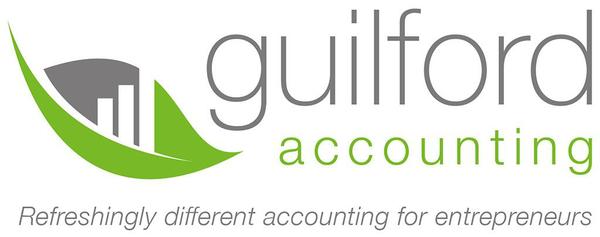Hi
When I start working with a new client, one of the first things I ask is, “Who’s your ideal customer?”
Most small business owners have a general idea. They’ll describe their best buyers with demographics: women aged 35–50, lives locally, uses Instagram, interested in health or sustainability. All helpful—but not nearly enough.
Because when you're writing content, planning a campaign, launching a new product or tweaking your services, you don’t need generalities. You
need insight. You need to know how your customers think, what makes them hesitate, what gets them excited, and how they talk about their challenges.
And that’s where AI can help.
Let me introduce you to an idea that’s already changing how businesses market, build and sell:
cloning your ideal client using a custom GPT.
No labs. No ethics boards. No white coats. Just a smart way to test your marketing and content ideas quickly, cheaply and with much better judgement than guesswork.
Why Clone Your Ideal
Client?
Most of us are constantly making decisions based on hunches.
- Will this landing page headline resonate?
- Should I lead with speed or simplicity?
- Would my client prefer a 30-minute video tutorial or a short PDF checklist?
In a perfect world, you’d pick up the phone and ask five clients. But clients are busy. You're busy. So you wing it.
Imagine instead that you could
ask a version of your ideal customer anytime—one trained to behave and respond just like them. That’s what a custom GPT persona allows you to do.
It’s not a gimmick. It’s a sounding board that helps you:
- Test campaign ideas before launching
- Refine tone of voice in your copy
- Uncover blind spots in your offers
- Stress test your assumptions—fast
How It Works: A
Simple Overview
Here’s the process I use to create a custom GPT that simulates a realistic, thoughtful, and sceptical version of your best client.
Step 1: Build a Realistic Picture of Your Ideal Client
You probably already have the ingredients:
- Notes from client meetings
- Sales call transcripts
- Email or chat exchanges
- Testimonials or case studies
- CRM notes and objections
Look for patterns:
- What frustrations do they repeat?
- What goals are they chasing?
- How do they describe their pain points?
- What kind of language do they use?
Pro tip: Forget demographics. You want behaviour,
motivation, language and constraints.
Step 2: Create the Custom GPT
Use ChatGPT’s Custom GPT feature (Pro account required), and feed in the data you’ve gathered. If you're not sure where to start, begin with a prompt like:
"You are Kirsty, a small business owner in her 40s who runs an online sustainable beauty brand. You’re juggling family, logistics, marketing and cashflow. You hate jargon, value transparency, and need practical solutions that save you time. You’ve been burned by overpromising consultants before, so you’re sceptical and careful with money. Respond to questions from someone building a service aimed at helping
you.”
Then expand with:
- Typical weekly challenges
- What success looks like
- How she makes buying
decisions
- How she reacts when under pressure
You can build multiple modes too:
- Time-poor Kirsty
- Curious
Kirsty
- Overwhelmed Kirsty
These ‘modes’ make your persona more nuanced—more human.
Step 3: Test with Known Scenarios
Before trusting your GPT clone, test it. Ask it questions where you know the answer, like:
“Would Kirsty sign up for a £97 course on Instagram marketing?”
If the response aligns with what real clients have said in the past, you’re on
track. If not, refine it.
Step 4: Use It to Test Marketing Ideas
Now for the fun part. You can ask your GPT persona:
- “Would this headline catch your
attention?”
- “Is this offer compelling enough?”
- “What questions would you ask before booking a call?”
- “Why might you not buy this product?”
Suddenly, you’re not guessing. You’re hearing back from a version of your customer who mimics their tone, objections and context.
What This Isn’t
Let’s be clear: your GPT client clone is not a replacement for talking to real
people.
It won’t give you new insight that doesn’t exist in your original data. It won’t pick up on subtle emotional reactions. It won’t build relationships.
But it will help you:
✅ Stress
test content
✅ Spot assumptions
✅ Explore tone and messaging
✅ Get unstuck quickly
And that can save you time, money, and bad
decisions.
Your Turn: Build One for Your Business
You don’t need to be technical. You just need to:
- Choose your ideal client
- Gather real-world data (conversations, notes, objections)
- Write a persona profile (professional context, frustrations, tone)
- Create a Custom GPT or use ChatGPT Advanced Data Analysis to simulate one
- Ask realistic questions and iterate
Most small business owners are too close to their product. They assume too much. Building an AI version of your best customer gives you something you rarely get in business: perspective.
Not perfect. But consistent,
honest, and always available—24/7. Now ask yourself:
Would “Kirsty” read your last blog post?
Would she click on your call-to-action?
Would she trust
you after one visit to your homepage?
Why guess when you can ask?
Noel Guilford
PS Would you like me to build a prototype of your ideal
client GPT? Or shall we walk through the steps together? If you want help building one, I can work with you to create and refine it. Once it’s set up, you can use it forever—to write copy, refine offers, test ideas, or train your team.
